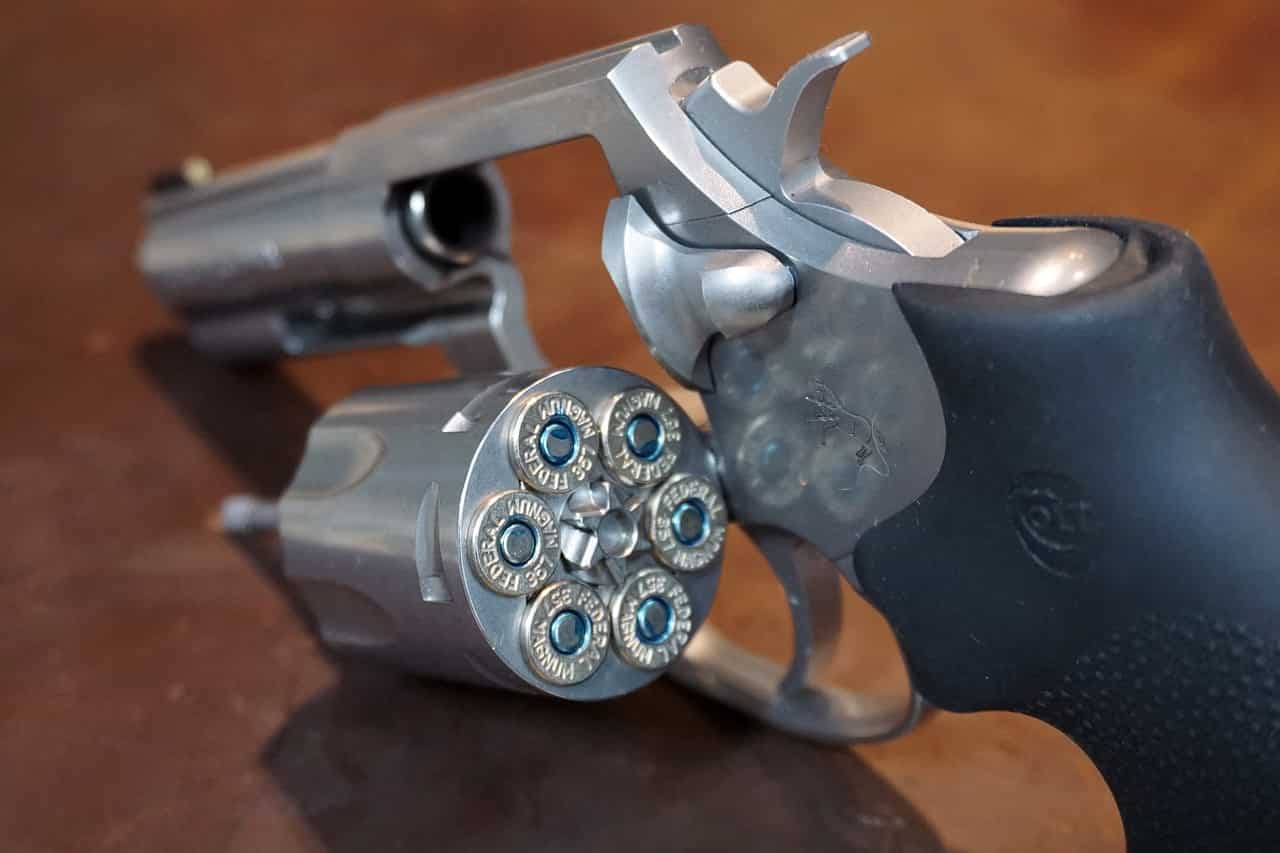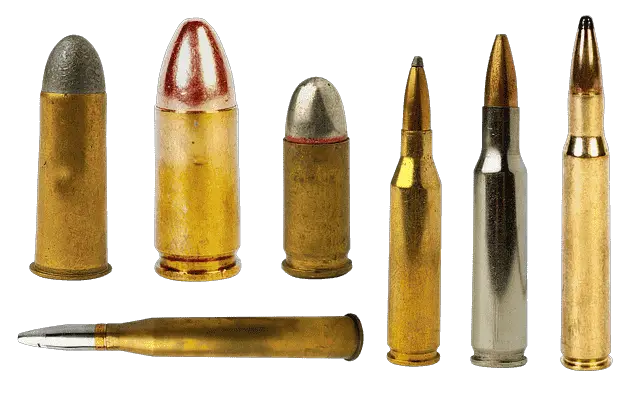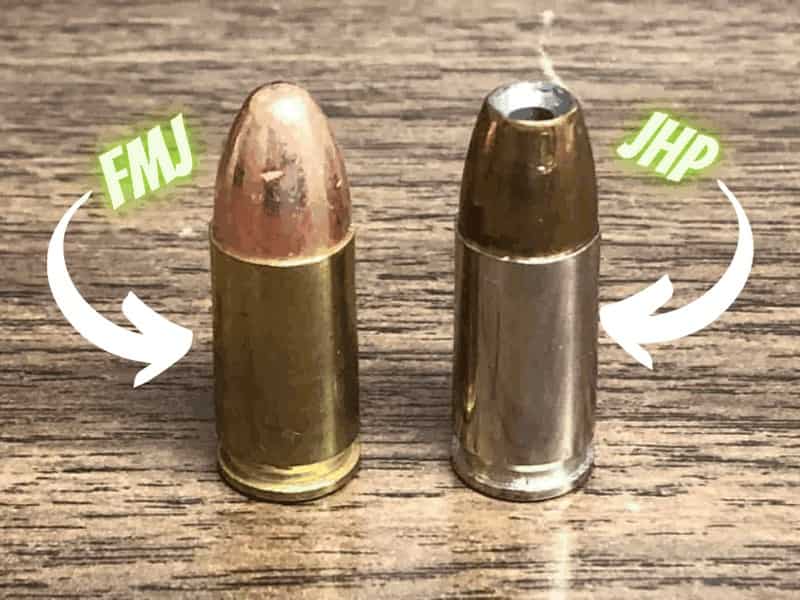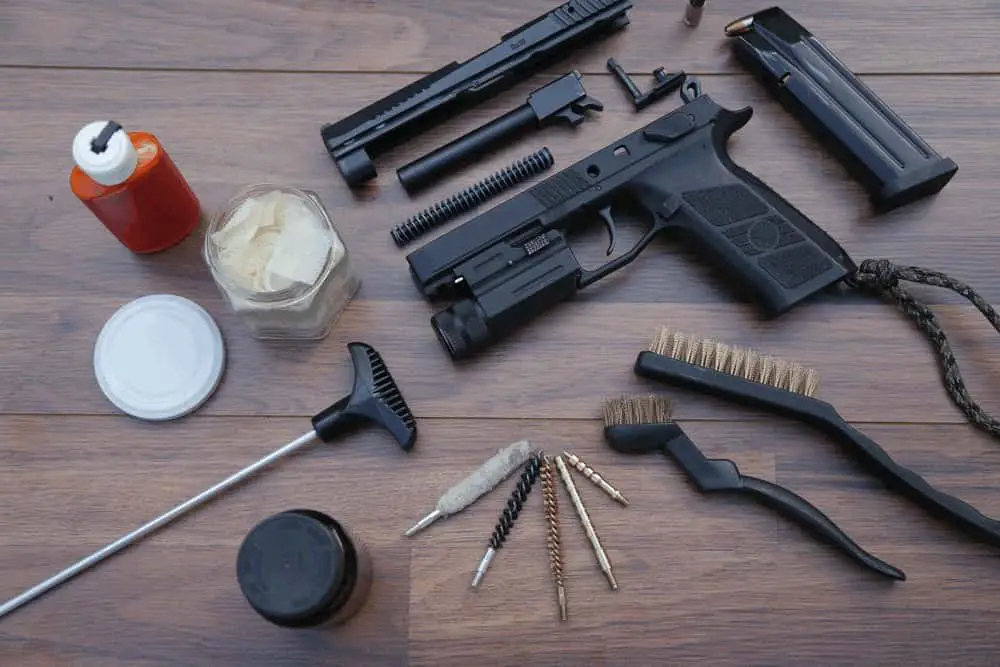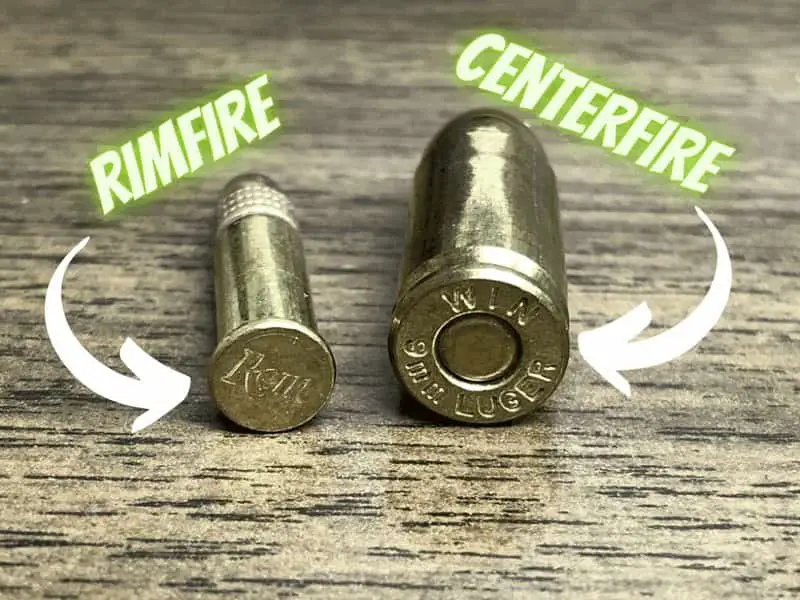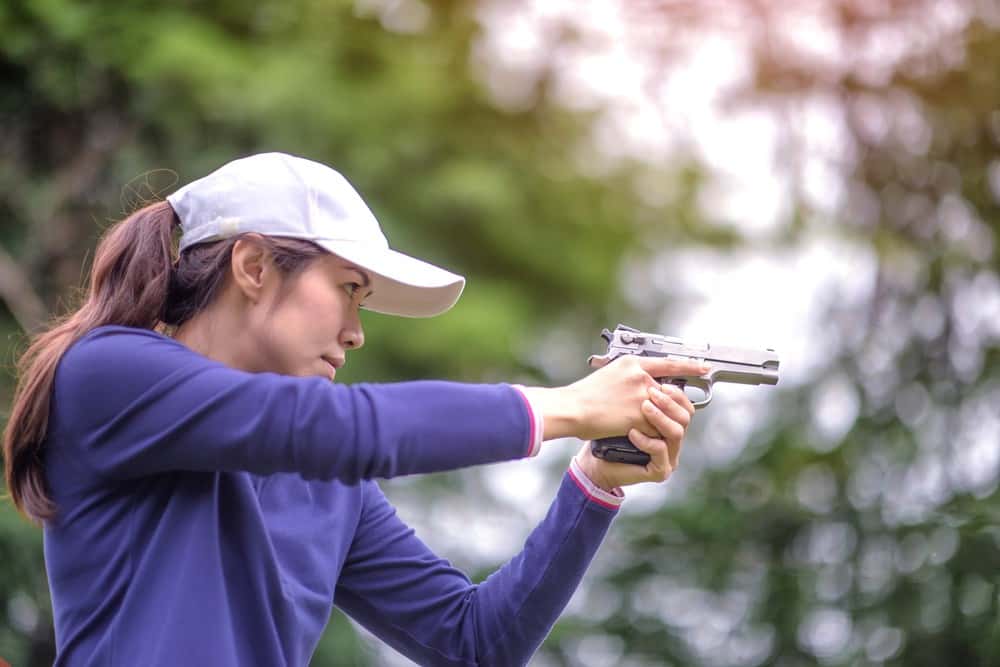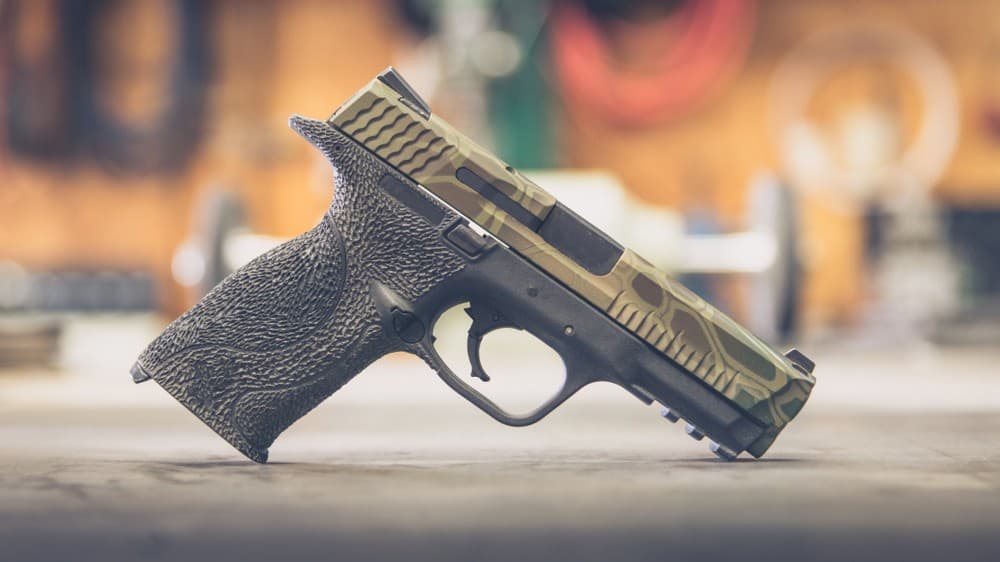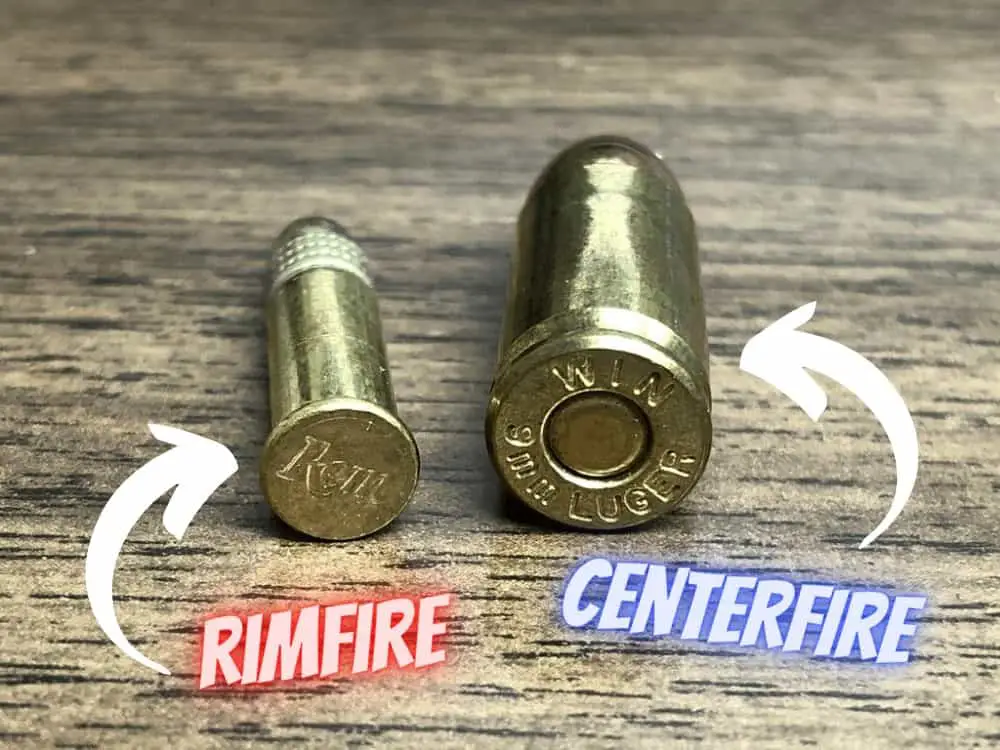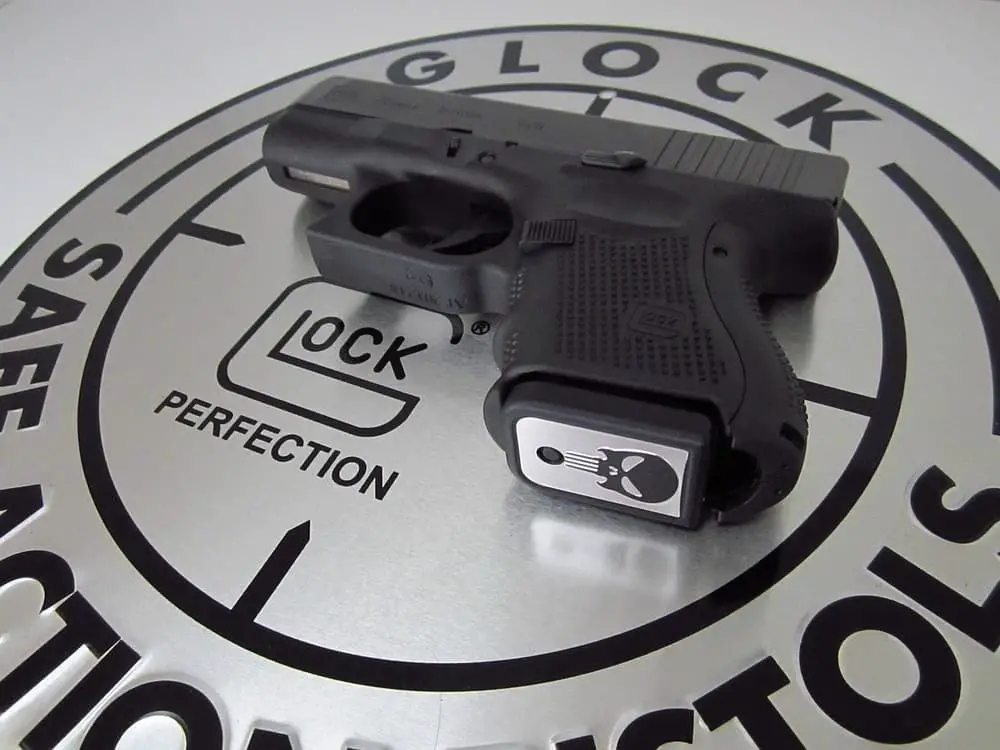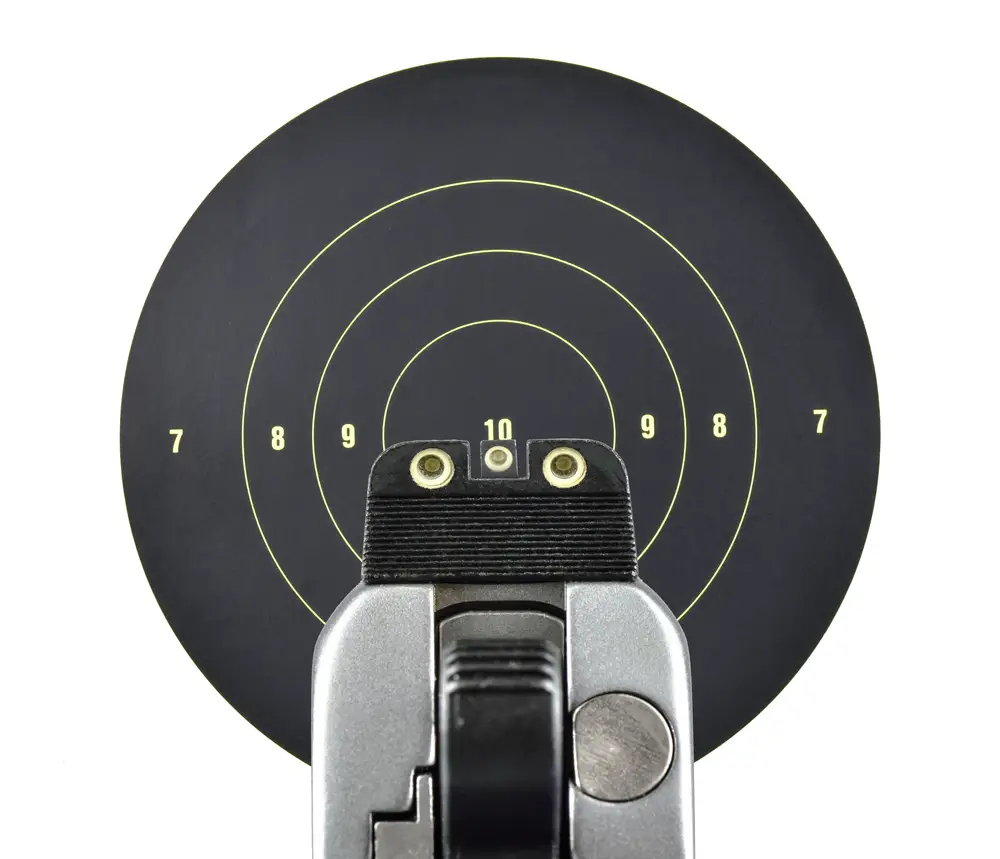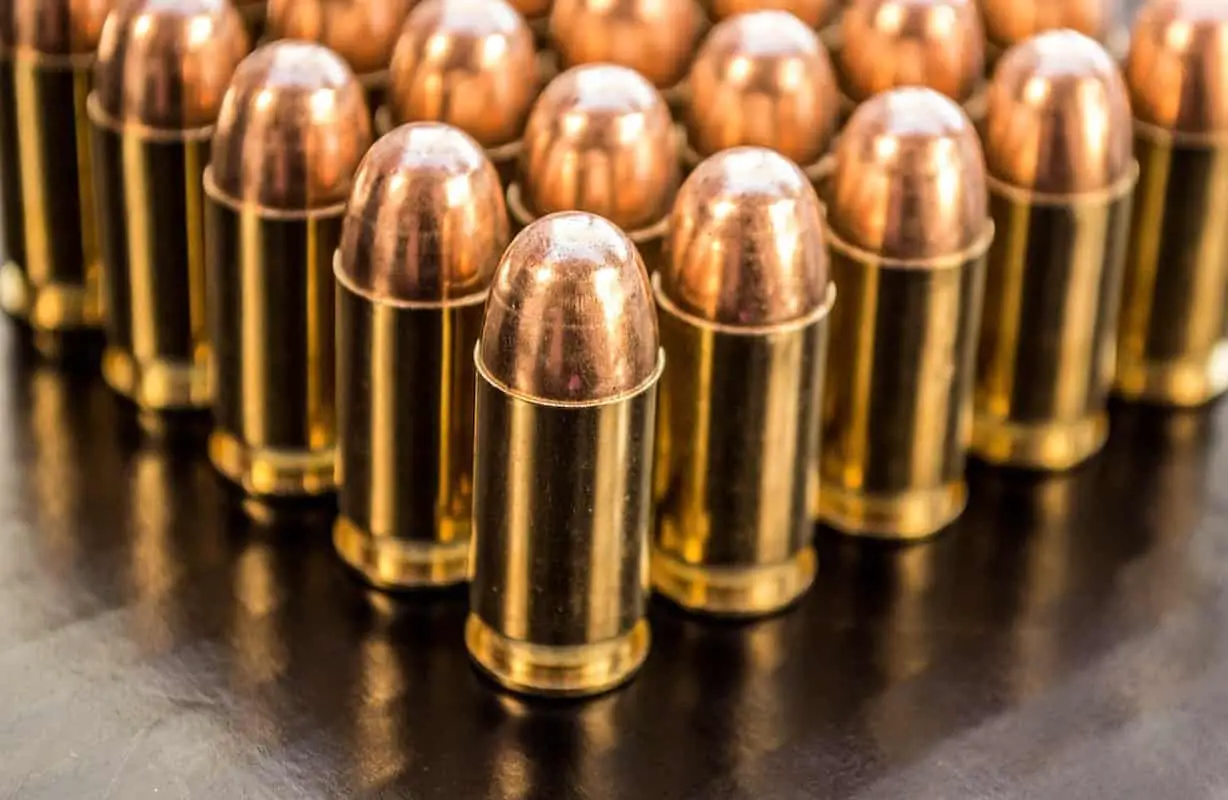Understanding Shotgun Choke

Shotgun chokes are constrictions at the end of the barrel that control the spread of shot. The tighter the constriction, the more the shot stays together, and the farther it travels. There are several types of shotgun chokes, including cylinder, improved cylinder, modified, improved modified, full, and extra-full.
Cylinder chokes have no constriction, so the shot spreads quickly. They’re best for close-range shooting, such as skeet or trap. Improved cylinder chokes have a slight constriction and are best for shooting at birds or small game up to 30 yards away. Modified chokes have a moderate constriction and are good for shooting at birds or small game up to 40 yards away.
Improved modified chokes have a slightly tighter constriction than modified chokes and are best for shooting at birds or small game up to 50 yards away. Full chokes have the tightest constriction and are best for shooting at birds or small game up to 60 yards away. Extra-full chokes have an even tighter constriction and are best for shooting at birds or small game beyond 60 yards.
When choosing a choke, it’s important to consider the type of shooting you’ll be doing and the distance you’ll be shooting. A tighter choke will hold the shot string together longer, but it will also reduce the spread of shot. A looser choke will allow the shot to spread more quickly, but it will also reduce the distance the shot will travel.
Choke tubes are a popular way to change the choke on a shotgun. They can be easily screwed into the end of the barrel and removed when not needed. Some shotguns come with interchangeable choke tubes, while others have fixed chokes that cannot be changed.
In conclusion, understanding shotgun chokes is essential for any shotgun owner. Choosing the right choke can make a big difference in your shooting accuracy and success. It’s important to consider the type of shooting you’ll be doing and the distance you’ll be shooting when selecting a choke.
Constriction and Its Impact
Shotgun chokes are designed to control the spread of shot as it exits the barrel. The constriction at the end of the barrel is what determines how tightly the shot is compressed. The tighter the constriction, the more the shot is compressed, which holds the shot string together longer.
The constriction of a choke is measured in thousandths of an inch. The tighter the constriction, the higher the number. A full choke has the tightest constriction, while a cylinder choke has no constriction at all.
The impact of choke constriction on shot patterns is significant. With a tighter constriction, the shot string stays together longer, creating a denser pattern. This is ideal for longer shots, where accuracy is critical. A tighter constriction also allows for a longer effective range.
On the other hand, a looser constriction allows the shot to spread out more quickly, which is ideal for closer shots. This creates a wider pattern, making it easier to hit a moving target.
It’s important to note that choke constriction is not the only factor that affects shot patterns. The type of shotgun, cartridge, and individual shooting skills can also impact the shot pattern.
In summary, the tighter the choke constriction, the more the shot is compressed, which holds the shot string together longer. This creates a denser pattern and allows for a longer effective range. However, a looser constriction can be beneficial for closer shots, creating a wider pattern that is easier to hit a moving target.
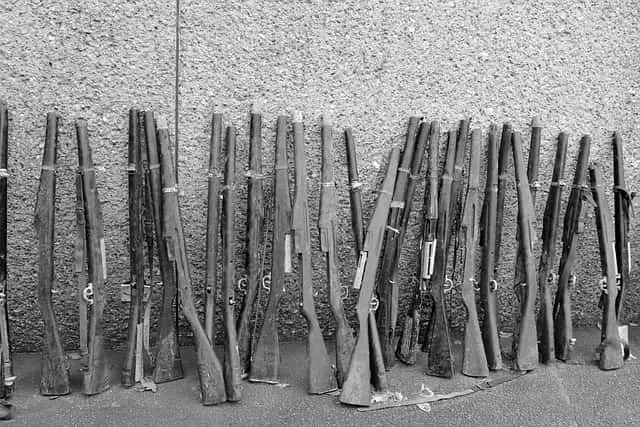
Types of Chokes and Their Uses
Shotgun chokes are used to control the spread of shot pellets as they exit the barrel of a shotgun. There are several types of chokes available, each with its own level of constriction and range. Understanding the different types of chokes and their uses can help a shooter select the right choke for their specific needs.
Cylinder Choke
The cylinder choke is the most open choke available and provides no constriction to the shot. This choke is best used for shooting at close range, typically within 15 yards. It is ideal for shooting at fast-moving targets, such as birds in flight or clay pigeons.
Improved Cylinder Choke
The improved cylinder choke is slightly more constrictive than the cylinder choke, providing a slightly tighter shot pattern. This choke is best used for shooting at targets within 20-25 yards, making it ideal for hunting small game or shooting at clay pigeons.
Modified Choke
The modified choke is a versatile choke that provides a moderate level of constriction, making it suitable for a wide range of shooting applications. It is best used for shooting at targets within 25-30 yards, making it ideal for hunting upland game birds or shooting at clay pigeons.
Improved Modified Choke
The improved modified choke provides a tighter constriction than the modified choke, making it suitable for shooting at targets within 30-35 yards. It is ideal for hunting larger game birds or shooting at clay pigeons.
Full Choke
The full choke is the tightest choke available, providing the highest level of constriction and the longest range. It is best used for shooting at targets beyond 35 yards, making it ideal for hunting waterfowl or shooting at long-range clay pigeons.
Extra Full Choke
The extra full choke is a specialized choke that provides even tighter constriction than the full choke. It is best used for shooting at targets beyond 40 yards, making it ideal for turkey hunting or shooting at long-range clay pigeons.
Skeet Choke
The skeet choke provides a wider shot pattern than the cylinder choke, making it ideal for shooting at clay pigeons at close range. It is also suitable for hunting small game at close range.
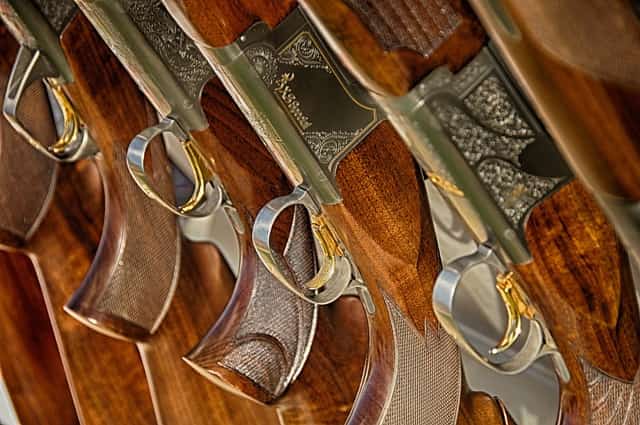
Turkey Choke
The turkey choke is a specialized choke designed for hunting wild turkeys. It provides a tight constriction that keeps the shot string together longer, allowing for greater accuracy at longer ranges.
Rifled Choke Tubes
Rifled choke tubes are designed to provide a spin to the shot pellets as they exit the barrel, increasing their accuracy and range. They are best used for shooting at targets beyond 50 yards, making them ideal for hunting deer or shooting at long-range clay pigeons.
Cylinder Bore
The cylinder bore is a shotgun barrel with no choke installed. It provides no constriction to the shot, making it ideal for shooting at close range targets or for shooting slugs.
Shot Pattern and Accuracy
When it comes to choosing the right shotgun choke, shot pattern and accuracy are two critical factors to consider. A choke with a tighter constriction will hold the shot string together longer, resulting in a denser pattern at longer ranges. This can improve accuracy and increase the chances of hitting your target.
The spread of a shotgun refers to the width of the shot pattern at a given distance. A tighter choke will result in a narrower spread, while a looser choke will produce a wider pattern. The pattern is the distribution of shot pellets within the spread.
The tightest shot pattern is achieved with a full choke, which has the maximum constriction. This type of choke is ideal for shooting at longer ranges, where a dense pattern is necessary for accuracy. However, a full choke may not be suitable for closer ranges, as the pattern may be too tight and cause the pellets to over-penetrate the target.
Modified chokes are a popular choice for a wide range of shooting scenarios. They have a moderate constriction, which produces a pattern that is neither too tight nor too wide. This makes them versatile and suitable for shooting at various ranges.
In summary, the tighter the choke, the narrower the spread and the denser the pattern. The choice of choke will depend on the shooting scenario and the range at which the target is located. It is important to pattern your shotgun with different chokes and cartridges to determine the best combination for your needs.
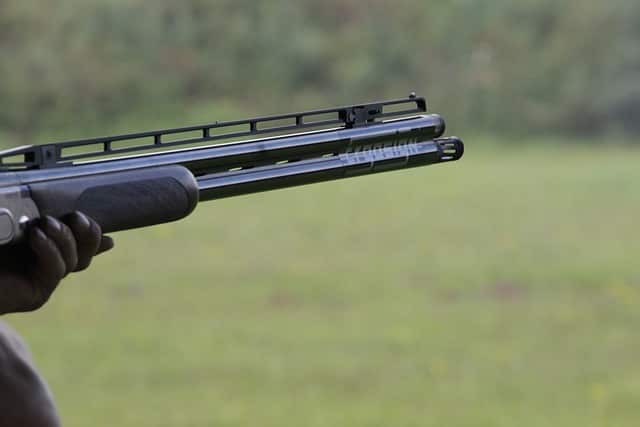
Distance and Range
The choke of a shotgun determines the shot string only, and it has no bearing on shot speed or range. However, the choke controls how tight or spread out the pellets will be at a specific distance. The tighter the constriction, the greater the distance that the cluster of pellets stays together. The looser the constriction, the faster the shot pattern spreads.
At close range, a cylinder choke has the widest pattern, meaning it will hit within a 30-inch target at 25 to 30 yards. This makes it ideal for shooting at close-range targets, such as birds flushing from thick cover.
A modified choke is more versatile and can be used for a wider range of targets at longer ranges. It is an excellent choice for shooting game birds at medium range, such as pheasants or quail.
For longer ranges, a full choke is the best option. It provides the tightest constriction, holding the shot string together longer. This results in a dense pattern that is ideal for shooting at longer-range targets, such as ducks or geese.
However, it is important to note that the effective range of a shotgun depends on many factors, including the type of ammunition used, the shotgun’s barrel length, and the shooter’s skill level. The maximum range of a shotgun is typically around 50 to 60 yards, but the effective range is generally much shorter.
In summary, the choke of a shotgun plays a crucial role in determining the pattern of pellets at different distances. A cylinder choke is ideal for close-range shooting, while a modified choke is more versatile and can be used for a wider range of targets at medium ranges. For longer ranges, a full choke is the best option, providing a tight constriction and a dense pattern. However, the effective range of a shotgun depends on many factors, and it is essential to choose the right choke for the specific shooting situation.
Hunting and Game
When it comes to hunting, choosing the right shotgun choke is crucial in determining the success of the hunt. Different types of game require different chokes to be effective. Some of the game that can be hunted with a shotgun include turkey, rabbits, quail, dove, waterfowl, small game, ducks, squirrels, upland game, dove hunting, and geese.
For example, when hunting turkey, a tight constriction choke such as a full choke is recommended as it holds the shot string together longer, allowing for a denser pattern and more effective shot placement. On the other hand, when hunting small game like rabbits or squirrels, a modified or improved cylinder choke is more suitable as it provides a wider pattern and allows for a greater margin of error.
During hunting season, it is important to be aware of any regulations that may affect the use of certain chokes or ammunition. For instance, some hunting areas may prohibit the use of lead shot for waterfowl hunting, requiring hunters to use non-toxic shot instead.
In summary, choosing the right shotgun choke is essential in hunting various types of game. Hunters should consider the type of game they are hunting, the distance of their shots, and any regulations that may impact their choice of choke and ammunition.
Shooting Sports and Chokes
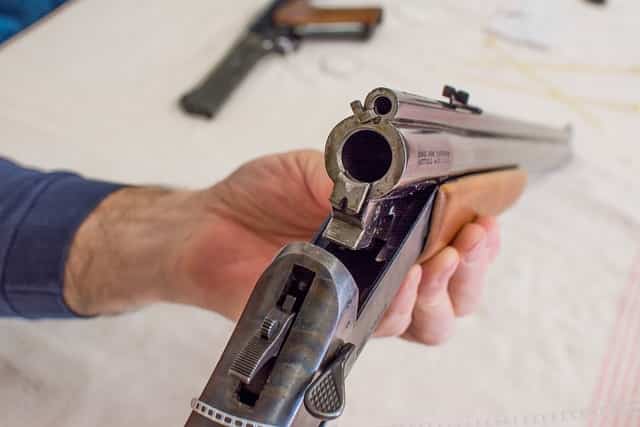
When it comes to shooting sports, the right choke can make all the difference. A choke is a constriction at the end of a shotgun barrel that controls the spread of the shot. The tighter the constriction, the longer the shot string stays together, resulting in a denser pattern at longer distances.
In skeet shooting, a form of moving clay targets for shotguns, a specialty choke known as Skeet 1 is used. Skeet 1 has a constriction of 0.13mm/0.005in. barrel to muzzle, and patterns 45% at 40 yards, and 75% at 25 yards. It is usually identified as “SK1” instead of notches.
For trap shooting, where clay targets are launched straight away from the shooter, a full choke is often used. Full choke has the tightest constriction of all the chokes, delivering a narrow spread pattern ideal for long-range shooting and targeting small game. The spread density is around 10% of the shell diameter.
Sporting clays, which simulate hunting scenarios with a variety of clay targets launched in different directions and speeds, often require a range of chokes depending on the target distance and speed. A cylinder choke has the widest pattern and is ideal for close-range targets, while a modified choke is a good all-around option for medium-range targets.
In general, the right choke depends on the shooting sport and the specific scenario. It’s important to experiment with different chokes and see which one works best for you. Keep in mind that the tighter the constriction, the longer the shot string stays together, resulting in a denser pattern at longer distances.
Table: Choke Styles and Their Characteristics
| Choke Style | Constriction | Pattern at 40 yards | Ideal for |
|---|---|---|---|
| Skeet 1 | 0.13mm/0.005in. | 45% | Skeet Shooting |
| Full | Maximum Constriction | Narrow Spread | Long-Range Shooting, Small Game |
| Cylinder | No Constriction | Widest Pattern | Close-Range Targets |
| Modified | Moderate Constriction | Medium Spread | All-Around Option |
| Improved Cylinder | Slightly More Constriction Than Cylinder | Slightly Narrower Pattern | Medium to Short Range Targets |
Shotgun Barrels and Choke Tubes
Shotgun barrels come in different lengths, materials, and designs. The shotgun barrel is the long, cylindrical tube that guides the shot from the cartridge to the muzzle end. The muzzle end of the barrel is where the choke tube is installed. The choke tube is a device that constricts the shot as it exits the barrel, holding the shot string together longer and increasing its effective range.
There are two types of chokes: fixed chokes and screw-in chokes. Fixed chokes are permanent and cannot be changed. Screw-in chokes are interchangeable tubes that can be screwed into the muzzle end of the barrel. Interchangeable tubes allow the shooter to quickly and easily change the choke depending on the type of shooting they are doing.
An unconstricted barrel, also known as a cylinder bore, has no choke and allows the shot to spread quickly. This is ideal for shooting at close range or for shooting at fast-moving targets like birds or rabbits. A full choke, on the other hand, constricts the shot the most and is ideal for shooting at longer ranges or for shooting at larger game like deer or turkey.
Some barrels have ports or cones near the muzzle end that help reduce recoil and improve accuracy. A nozzle is a device that can be attached to the muzzle end of the barrel to further reduce recoil and improve accuracy. However, these devices may not be legal in all hunting or shooting situations.
In general, the tighter the choke, the tighter the constriction, and the longer the shot string will hold together. However, it is important to choose the right choke for the type of shooting you are doing to ensure the best results.
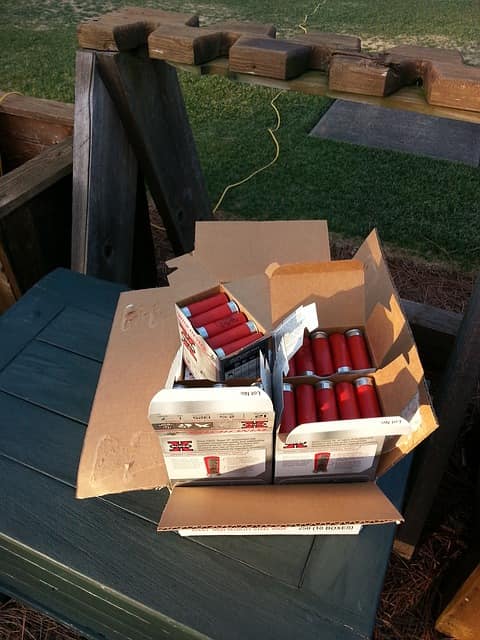
Ammunition Types
When it comes to choosing the right ammunition for your shotgun, there are a few important factors to consider. One of the most important is shot size, which refers to the size of the individual pellets that make up the shot. Smaller shot sizes are typically used for smaller game, while larger shot sizes are used for larger game.
Another important factor to consider is the type of shot. Steel shot is a popular choice for waterfowl hunting, as it is less likely to damage the environment than lead shot. However, steel shot is also less dense than lead shot, which can affect its performance at longer ranges.
Lead shot is still a popular choice for many types of hunting, as it is denser than steel shot and therefore performs better at longer ranges. However, lead shot is also more toxic than steel shot, which can be a concern for hunters who want to minimize their impact on the environment.
In addition to shot size and type, the construction of the ammunition itself can also affect its performance. Some shotgun shells are designed to produce a tighter shot pattern, while others are designed to produce a wider pattern.
Ultimately, the right ammunition for your shotgun will depend on the type of game you are hunting and the conditions in which you are hunting. It is important to choose ammunition that is appropriate for your shotgun and your intended use, and to always follow safe shooting practices to minimize the risk of injury or damage.
Firearms and Self-Defense
Shotguns are a popular choice for self-defense, home defense, military, and law enforcement purposes. When it comes to shotguns, the choke installed in the barrel plays a crucial role in determining the accuracy and effectiveness of the weapon.
A choke is a constriction at the end of the barrel that controls the spread of the shot. The tighter the choke, the longer the shot string stays together, resulting in a denser and more concentrated shot pattern. This is particularly important in self-defense situations where accuracy is paramount.
The full choke is the tightest constriction available and delivers the highest possible accuracy for distances beyond 40 yards away. It is also the best option when it comes to the shotgun shot size chart. The modified choke is a popular choice for self-defense purposes as it splits the difference between the full and improved cylinder chokes.
When selecting a choke for self-defense purposes, it is important to consider the trigger pull, power, and velocity of the shotgun. A choke that is too tight can cause the trigger pull to be heavier, making it difficult to aim accurately. A choke that is too loose can result in a lack of power and velocity.
In summary, when it comes to self-defense with a shotgun, choosing the right choke is crucial. The full choke delivers the tightest constriction and the highest possible accuracy for distances beyond 40 yards away, while the modified choke is a popular choice for self-defense purposes. It is important to consider the trigger pull, power, and velocity of the shotgun when selecting a choke.
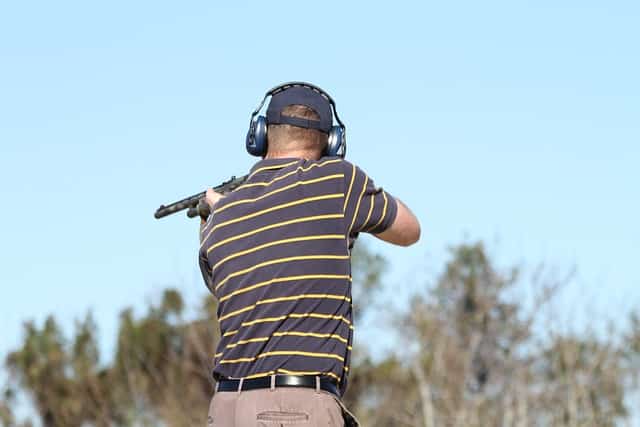
Frequently Asked Questions
Which shotgun choke is the most constrictive for holding the shot string together?
The full choke is the most constrictive for holding the shot string together, resulting in a denser and more concentrated shot pattern. It is ideal for hunting activities that require long-range shots.
Which choke is the tightest for sporting clays?
The improved modified (IM) choke is the tightest for sporting clays, as it provides a balance between range and shot density. It is suitable for intermediate range shots, making it a popular choice for sporting clays.
What is the best shotgun choke for trap shooting?
The modified choke is the best shotgun choke for trap shooting, as it provides a good balance between shot density and range. It is suitable for shooting targets at medium range.
What are the differences between full and extra full shotgun chokes?
The main difference between full and extra full shotgun chokes is the level of constriction. Extra full chokes are more constrictive than full chokes, resulting in an even denser shot pattern. Extra full chokes are ideal for long-range shots, while full chokes are better suited for intermediate range shots.
How does an IM choke compare to an improved modified choke?
An IM choke is slightly less constrictive than an improved modified choke, resulting in a slightly wider shot pattern. The IM choke is suitable for intermediate range shots, while the improved modified choke is better suited for longer-range shots.
What is the tightest constriction for a 12 gauge shotgun choke?
The tightest constriction for a 12 gauge shotgun choke is the extra full choke, which is designed to provide the most constrictive shot pattern possible. It is ideal for long-range shots and is commonly used for turkey hunting.
The full choke is the most constrictive for holding the shot string together, resulting in a denser and more concentrated shot pattern. It is ideal for hunting activities that require long-range shots.
“}},{“@type”:”Question”,”name”:”Which choke is the tightest for sporting clays?”,”acceptedAnswer”:{“@type”:”Answer”,”text”:”
The improved modified (IM) choke is the tightest for sporting clays, as it provides a balance between range and shot density. It is suitable for intermediate range shots, making it a popular choice for sporting clays.
“}},{“@type”:”Question”,”name”:”What is the best shotgun choke for trap shooting?”,”acceptedAnswer”:{“@type”:”Answer”,”text”:”
The modified choke is the best shotgun choke for trap shooting, as it provides a good balance between shot density and range. It is suitable for shooting targets at medium range.
“}},{“@type”:”Question”,”name”:”What are the differences between full and extra full shotgun chokes?”,”acceptedAnswer”:{“@type”:”Answer”,”text”:”
The main difference between full and extra full shotgun chokes is the level of constriction. Extra full chokes are more constrictive than full chokes, resulting in an even denser shot pattern. Extra full chokes are ideal for long-range shots, while full chokes are better suited for intermediate range shots.
“}},{“@type”:”Question”,”name”:”How does an IM choke compare to an improved modified choke?”,”acceptedAnswer”:{“@type”:”Answer”,”text”:”
An IM choke is slightly less constrictive than an improved modified choke, resulting in a slightly wider shot pattern. The IM choke is suitable for intermediate range shots, while the improved modified choke is better suited for longer-range shots.
“}},{“@type”:”Question”,”name”:”What is the tightest constriction for a 12 gauge shotgun choke?”,”acceptedAnswer”:{“@type”:”Answer”,”text”:”
The tightest constriction for a 12 gauge shotgun choke is the extra full choke, which is designed to provide the most constrictive shot pattern possible. It is ideal for long-range shots and is commonly used for turkey hunting.
“}}]}
Have you ever thought about buying ammo online?
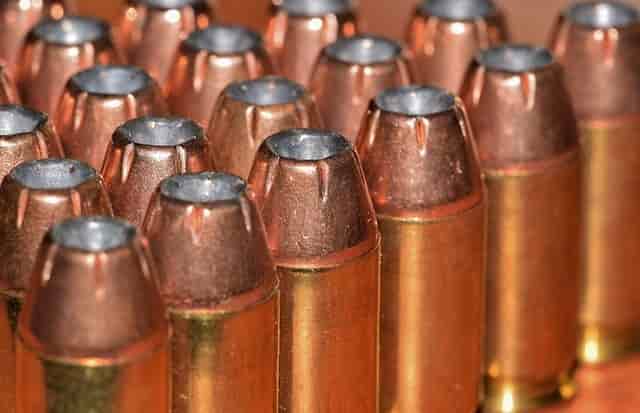
I’m telling you it’s so easy with Lucky Gunner! The ammo shown on their site is guaranteed to be in stock and will ship fast. I heartily endorse Lucky Gunner and so do their many customers.
“Okay, so far I’ve dealt twice with LuckyGunner, and all I can say is, I LOVE YOUR COMPANY!!!!
Imagine: only items in stock are advertised. Who’da thunk, eh? The more highly advertised ones – Cheaper Than Dirt, Cabela’s, et. al. – will put you on backorder forever and a day. But LuckyGunner – I ordered 500 shells of .45 ACP (hard to get in this “shortage”) – and there it was at my address. No backorders, no bull. Business as it should be.
Yes, I’m telling my friends! I’m constantly writing down your addy on bits of paper (and running out of the latter), spreading the joyous news, “No backorders! No bull! Try LuckyGunner.com, you won’t be sorry!” Thank you for being there for an ammo-starved public. And, thanks for the SUPERB customer service.”
— Walter J., Silverdale, WA —


Jason Huskey
Owner of CCWClasses.net
Jason Huskey is a family man with three kids and a wonderful wife. He’s always starting new hobbies, but his true passion lies in shooting sports. Jason has been a CCW license holder for over 10 years and carries every day. In addition to firearms, he also enjoys playing guitar and writing songs. He tries to live by the Christian values he believes in.
More things you might enjoy…
Can a 38 Special Shoot 357 Rounds?
Image by MikeGunner from Pixabay I’ve long since discovered that very few activities give me the same thrill and sense of security as firing a gun. As a gun owner and enthusiast, I’ve always been curious about which guns can shoot which kinds of ammunition. I have a Derringer five-shot revolver that uses .22 rounds.…
Who Makes the Most Popular Brands of Ammo
If you are here to figure out who makes Herter’s ammo just look below the following table for a more thorough answer. If you are looking for a specific type of ammo, then you need to start by figuring out who makes it. There are lots of options for ammunition and each type of bullet…
What Does Full Metal Jacket Mean?
If you have heard the term full metal jacket, then you might be wondering what this means. I know that growing up, I heard this term a lot. I dismissed it as some sort of saying or cliche. Eventually, I decided that I needed to figure out what people meant when they use this term.…
How Often Should You Clean Your Gun?
After purchasing a firearm, you might wonder how often you should clean your gun. The truth is that it largely depends on how often you use it and where you live. Keep reading to learn more. How Often Should You Clean Your Gun? The short answer: do a light cleaning after every shooting session and…
What Is The Main Difference Between Centerfire And Rimfire Ammunition?
Rimfire vs Centerfire Everyone has to start somewhere. If you’re new to guns, learning the difference between rimfire and centerfire ammunition is important. Let me backtrack a moment. The first time I went out on the gun range, I had zero idea that there were different types of ammo for different types of weapons. All I knew…
Continue Reading What Is The Main Difference Between Centerfire And Rimfire Ammunition?
How Should You Hold a Handgun for Maximum Accuracy?
Whether it’s for sport or you find yourself in a defensive situation where you need to use a handgun, how you hold it will significantly affect your accuracy. Developing your handgun techniques will help you become a better shot and keep you safe. Read on to learn the answer to the question: How should you…
Continue Reading How Should You Hold a Handgun for Maximum Accuracy?
What Is Stippling On A Gun?
Hey, would you like a more firm grip on your gun? Would that help you shoot better? Well that is what stippling is for. Stippling is a modification to the grip that makes it, well, more grippy. It is done by sanding off the original finish and then using a hot soldering iron to make…
What Is A Centerfire Pistol?
To answer the question: “What Is A Centerfire Pistol?”, you must first understand that there are two main types of ammunition: Centerfire Rimfire These ammo categorizations are based on where the firing pin hits the back of the bullet to make it fire. A centerfire pistol is one where the firing pin strikes the center…
Is It Bad To Dry Fire A Glock?
There are loads of myths and assumptions surrounding handguns. If you grew up around guns, you probably heard some of these myths. Today, we will answer the question: Is it bad to dry fire a Glock. The Quick Answer Dry firing modern centerfire guns is completely fine (this includes most Glocks). The firing pin does…
What Is The Sight Picture?
When you first became interested in shooting you probably heard the terms sight picture and sight alignment being thrown around. Most people tend to use the two terms interchangeably; however, they do not mean the same thing. In this guide, I will make a clear distinction between sight picture and sight alignment. To master any new trade, you must…
What is Ball Ammo
When you hear the term “ball ammo” you may be picturing an actual ball. While the term did originate from ball shaped ammo, that’s not what it means today. Most ball ammo today is cylindrical in shape. It will have a lead core coated with copper. Keep reading to learn all about the history and…
